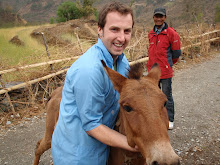Compared to the urban areas, the women of rural Nepal have very little idea of how the constitution is meant to protect them. To increase their awareness, 2 members from each of the 16 groups of CLPSP joined together to partake in Women's Legal Rights training. Two professional female solicitors were hired to conduct the training aimed at empowering the women with the knowledge of their basic human rights as well as legal entitlements under Nepali law.
The topics were discussed openly among the participants and included the UN Convention for the Elimination of Discrimination Against Women (CEDAW), domestic violence, rape, prostitution, trafficking, torture and the right to property, loans and legal representation.
Each of the participants will bring the message home to their peers and disseminate the word throughout the local villages and communities. The women felt united together against discrimination and also a belief in themselves to stand up for each other.
VIVA Nepal aims to increase the socio economic status of impoverished subsistence farmers by training them with the skills they need, focusing on the women farmers who do 80% of the agricultural work in the country.
Tuesday, April 28, 2009
Thursday, April 16, 2009
Six Seasons
According to the Nepali calender, this is the beginning of 2066 and a time of great celebrations. It's pre-monsoon and occasional showers provide some relief from the stifling heat and some much need moisture for the parched soil. Before the monsoon really kicks in, the rice or paddy will be sowed just like any other crop and when the rains pour down the paddy fields will flood and the country side will be a sea of green.
Come Sept/Oct, the most important festival of the year, Dasain, marks the beginning of the harvest season. Both the season and the festival last a long time, most of the work being done by hand. It also coincides with the start of the dry season.
Many parts of the country sow a second crop at this time, usually maize, wheat or millet, as the weather is very mild, much like an Irish summer without the rain. Some of the more fertile plains can manage up to 3 crops per year but many of the terraced paddy fields remain barren during the dry season owing to water shortages or distance from the homestead.
Following VIVA's research, it has been shown that livestock suffer from a nutritional deficit in the dry months due to the lack of green forage and fodder, which has a detrimental effect on milk yields. But the empty paddy fields are more than capable of sustaining temperate, drought resistant grasses during this time, and can replace the poor quality rice straw which is normally fed.
The groups have learned about basic animal nutrition to increase production, now we aim to show them how to cultivate their own feed. And bearing in mind that 2/3 crops per year can also deteriorate the quality of the soil, we have included a soil management component to the training- manure management, green manures, avoiding chemical fertilizers, soil conservation, etc. We begin on Monday.
Come Sept/Oct, the most important festival of the year, Dasain, marks the beginning of the harvest season. Both the season and the festival last a long time, most of the work being done by hand. It also coincides with the start of the dry season.
Many parts of the country sow a second crop at this time, usually maize, wheat or millet, as the weather is very mild, much like an Irish summer without the rain. Some of the more fertile plains can manage up to 3 crops per year but many of the terraced paddy fields remain barren during the dry season owing to water shortages or distance from the homestead.
Following VIVA's research, it has been shown that livestock suffer from a nutritional deficit in the dry months due to the lack of green forage and fodder, which has a detrimental effect on milk yields. But the empty paddy fields are more than capable of sustaining temperate, drought resistant grasses during this time, and can replace the poor quality rice straw which is normally fed.
The groups have learned about basic animal nutrition to increase production, now we aim to show them how to cultivate their own feed. And bearing in mind that 2/3 crops per year can also deteriorate the quality of the soil, we have included a soil management component to the training- manure management, green manures, avoiding chemical fertilizers, soil conservation, etc. We begin on Monday.
Subscribe to:
Posts (Atom)



























